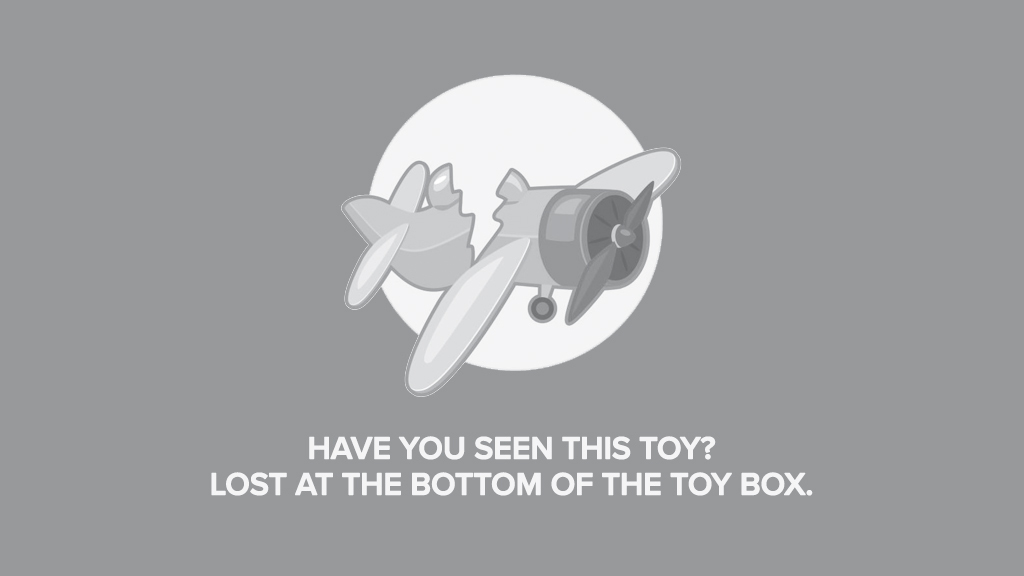As YouTube officially takes its crown as the new king of toy advertising, it’s time to start looking beyond the video platform to see how the industry will connect to kids and parents.
If you ask just about any parent or grandparent what their little ones are into these days, odds are they will fire off the names of a few new toys and games. More often than not, they usually wrap those names in a statement about how the kids found them when watching a YouTube video.
Of course, we all saw the headlines and heard the hype about how the YouTube channel Ryan ToysReview racked up nearly 30 billion plays, and turned the youngster—who will turn 9 years old this year—and his family into millionaires many times over. Out of the top 10 YouTube creators, Ryan is the only one who focuses on toys, but now he’s leading the pack and eclipsing more polarizing figures, such as Jake Paul.
What many of the top creators now have in common isn’t just the ability to place products in front of a massive audience. Some newly minted licensing deals are shifting some of the focus from helping to market existing brands into marketing brands of their own. pocket.watch partnered with Bonkers Toys to bring Ryan into the toy aisles himself with the launch of the Ryan’s World toy line last fall, and Brand Central repped Paul for deals with the likes of Bioworld and Trends International. These deals and ever-blurring lines between entertainment and marketing, and are expected to come under more scrutiny in the months and years ahead, particularly as YouTube and other platforms continue to replace traditional TV and start being held to similar advertising standards. This is important to keep in mind not only for partnered content, but also for video that’s developed in-house or through agencies.
Last fall, the Children’s Television Act (CTA) of 1990 started popping up on the radar again for two reasons. First, Variety reported that the Federal Communications Commission was looking at the regulations that dealt with balancing advertising and educational programming—which had seen no substantial updates since 1996—in order to ease those regulations on traditional broadcasters. Second, those who watched the digital space grow and replace more traditional TV, a drastic shift since the CTA was first passed 30 years ago, cited it as a growing concern on how toys were being marketed to kids. The FCC originally passed the CTA to prevent companies, such as Hasbro and Mattel, from marketing companion toys during animated shows such as G.I. Joe and Masters of the Universe. Now that YouTube creators, such as Ryan and Paul, are promoting their own merchandise—sometimes in a way that plays loose with the Federal Trade Commission (FTC) guidelines on disclosures—shouldn’t the same rules apply in the digital space?
The FTC made it very clear that it is the sponsor’s responsibility to make sure that their partners play by the rules. There’s also the matter of “kids selling to kids,” which sponsored content should always avoid. When calling out specific retailers where product is sold, creators should use language such as “available at” or “found at” instead of hard-sell phrases such as “buy this” or “kids, tell your parents!” that could encourage kids to want these products.
When companies partner with influencers of any kind, they need to consider many factors aside from sheer numbers, such as views and follower count. As YouTube culture continues to evolve, there’s also a fracturing of sub-genres that’s opened some moral, ethical, and—in some cases—legal questions beyond the FTC and FCC as to how the creators present content, and not just from a sales standpoint.
When YouTube creators move beyond traditional toy reviews, features, and commentary and begin making short films using major companies’ intellectual properties, when does it cross the line from parody a la Robot Chicken and go beyond fair use and into infringement? Some took notice, and now we’re seeing professionally produced, authorized content from major brands presented in a hand-crafted style with unboxings, stop-motion animation, and toy hacks. These are the very formats that captivate young audiences, but in a streamlined form that controls the messaging and maintains the brand’s integrity.
And now we’re moving beyond YouTube.
OTT: The Next Frontier for Toys
As YouTube becomes more crowded, creators and advertisers alike are starting to look beyond that ecosystem for future opportunities. The over-the-top (OTT) market is heavily developing this year, in which many familiar creators are starting to syndicate their content beyond YouTube, or create original content for specific outlets, such as Roku, Hulu, Amazon Prime Video, and Apple TV. Companies even clean up and repackage content, which the aforementioned pocket.watch was quick to do. The company markets half-hour “Ultimate Mishmash” compilation episodes of its YouTube series to other platforms to generate more views.
OTT is giving everyone a new place to play, but these new platforms should be approached cautiously to look out for the greater good of all parties—something that YouTube perhaps evolved past too quickly.
“Regardless of which platform creators choose, they always need to remember that their primary audience is children,” says Melissa Hunter, CEO of Family Video Network, an outfit that helps pair creators and brands across an array of digital platforms. “Those in the family space have a much higher level of responsibility than other creators, but many of them still do not understand what that means. Toy brands and influencer agencies need to be certain that the creators with whom they partner are acting responsibly, not just because of the threat of fines or FTC censure, but because it is the right thing to do for children and families.”
Avoiding the Temptation of Clicks AND Views Over Quality
Companies should avoid proliferating sensationalized content, particularly content that may appear to place kids in danger or encourage what could be perceived as irresponsible actions or habits (including overeating, overspending, and even gambling). If you uploaded a video to YouTube recently, you may have even noticed a call-to-action on the side that asks straight out, “Do children appear in this video?” As part of YouTube’s commitment to improving its kids and family content, the company is actively attempting to steer creators away from “dangerous stunts and pranks” and “emotional distress.” The old “don’t try this at home” days might be behind us.

Right for the Brand, Right for Kids and Families
The best content provides real value to the viewer. Be entertaining. Be educational. Be storytellers. Use the product as the catalyst—or even as a MacGuffin—to do something more or a bit different than everyone else. One of the best examples in the past few years is one that my own daughters discovered on their own on YouTube, the mysterious “Nurse Tania.” In a series of short but well-produced clips, kids were getting care tips on taking care of and raising tiny alien babies. Aside from the occasional mention of a Distroller clinic, there was never any mention of where to buy these Neonate Babies, nor were they ever distinctly referred to as being toys. For Distroller and its dolls (mostly known in Mexico), the buzz began growing organically, creating demand for a product sold largely at a few experiential retail locations on the West Coast.
“We love YouTube as the outlet of choice for children to find us, giving them the tools to learn about our brand, our values, and characters through fun and entertaining content,” says Daryn Fillis, CEO of Distroller USA. “We don’t believe in shoving advertising down kids’ throats, just snippets of our world to help tell our story.”
Then there’s MGA Entertainment, which leveraged partnerships with individual third-party creators and launched its own channels to back young brands, such as L.O.L. Surprise! and Kingdom Builders. The company pulled back on traditional TV ad spend in favor of quality content for new platforms. According to CEO Isaac Larian, the shift was necessary to evolve.
“The best thing that happened to MGA was for Nickelodeon (we used to do more than $30 million of TV advertising a year with them) to cancel our booked TV for the Hard Eight,” Larian says. “It forced us to think and find a new way to market. It was risky, but we succeeded and led and never looked back.”
And while emerging products often are the biggest focus, legacy brands can also benefit from a video content recharge. One brand doing well in the space is Mattel’s Hot Wheels, which the company positions as a lifestyle brand. It brings kids and adults together with a mix of content from STEM-based educational fare to action sports, stop-motion video, and real-life automotive events produced in collaboration with Race Service and Donut Media.
As we move through Toy Fair season and start looking toward summer and the holidays on the horizon, now is the perfect time to pull back and do a little digital housekeeping. Companies should make sure that the content put out there into the world is presented with purpose and integrity when it comes to toys and games. If it’s good for consumers, it will also be good for the greater toy industry as a whole.
Photo: YouTube Kids app

